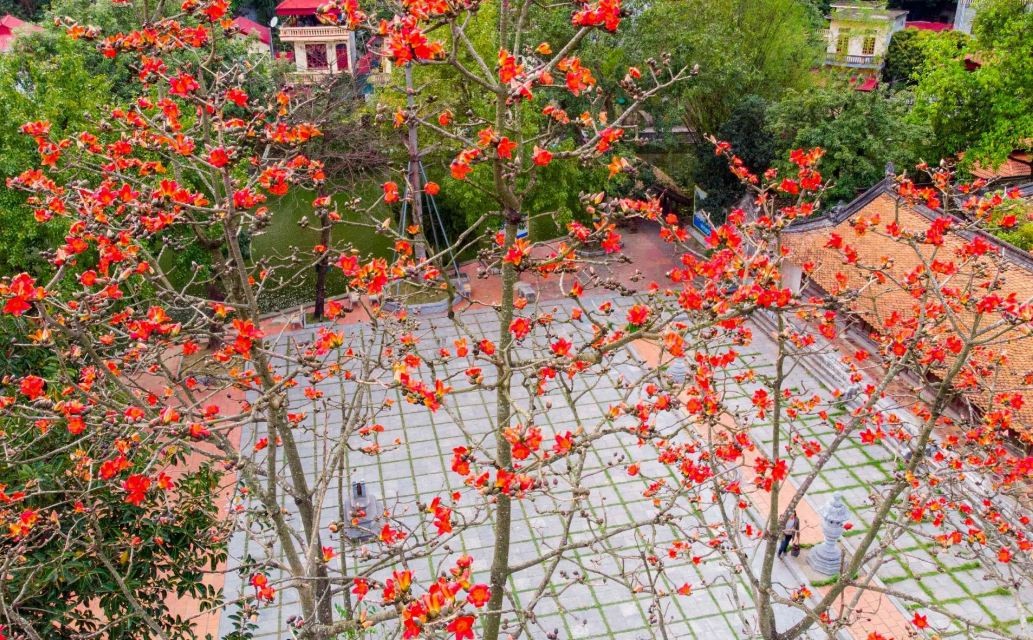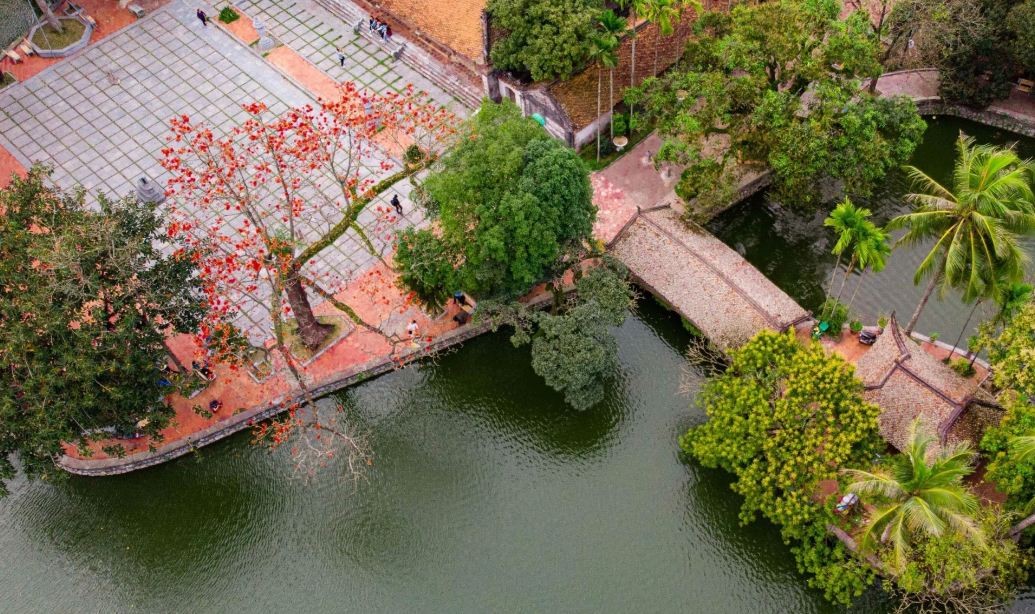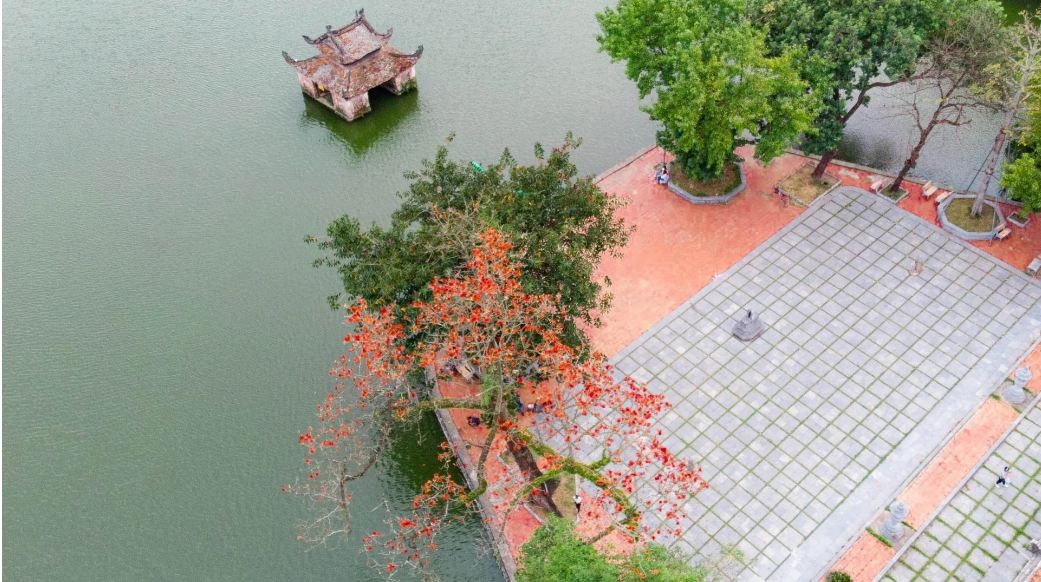March is the time for Hoa Gao or Bombax Ceiba, which means “rice flower” in Vietnamese. The flowers in the nearly 1,000 years-old Thay Pagoda in Hanoi are in full blossom, creating a unique scene that can be seen nowhere else.
 |
| The images of bright red silk cotton trees in the pagoda have become the inspiration for photographs, paintings, songs, and literature. Source: VTC News |
 |
| In the past, the yard of Ca pagoda (the main pagoda at the foot of the mountain) had 5 rice flower trees, but 4 trees died, and only one left is located on the left side of the pagoda, near the old Nhat Tien Kieu Bridge. Recently, the temple has planted two new trees. Source: VTC News |
 |
| The flowering season lasted nearly a month and the red flowers fought fall off before the buds start coming out. The flower is known by many names such as “Gao”, “Moc Mien” or “Po Lang” tree in Vietnamese. Source: VTC News |
 |
| Thay pagoda has become an attractive destination for young people, especially when the red silk-cotton flowers bloom. Source: VTC News |
 |
| From afar, visitors can admire the red silk-cotton flower tree on the shore of the lake. The floating theater used for water puppet shows, is a unique architecture, a typical image of Thay Pagoda. Source: VTC News |
 |
| During the flowering season, all the old leaves fall off, leaving the tree with only flowers. The trees now look like a burning torch with hundreds of red flames. Source: VTC News |
 |
| All parts of a red cotton tree can be used as traditional medicine for reducing heat and detoxifying. Especially, its flowers are used to treat various diseases such as gastric ulcers, and duodenitis. Source: VTC News |
 |
| In addition to Thay Pagoda, in Hanoi, rice flowers are also grown in many streets of Tran Khanh Du, Pham Ngu Lao, Giai Phong – Phuong Mai junction, Tran Phu High School. Source: VTC News |
|
Thay Pagoda, also known as Ca or Thien Phuc Tu Pagoda, is located at the foot of Sai mountain (Thay mountain) in Sai Son commune, Quoc Oai district, around 25km southwest from Hanoi city centre. With the small picturesque lake in the foreground and the mountain at its rear, the structures and gardens of Thay pagoda are both serene and artfully crafted. This is one of the oldest Buddhist Temples in Vietnam. Built in the 11th century, during the reign of King Ly Nhan Tong, Thay Pagoda has three inner sections including the outer, for offerings and ceremonies, the middle, for worship of Buddha, and the, for worship of Zen Master Tu Dao Hanh. In front of the pagoda is Long Chieu Lake. In the middle of the lake is a floating temple that serves as a stage for water puppet shows. The floating theater, is a unique architecture, a typical image of Thay Pagoda. Every year, Thay Pagoda Festival is held on the third lunar month to pay homage to Zen Master Tu Dao Hanh – who has made great contributions to the people and the ancestor of water puppetry. |
Ancient house in Ma May
NDO – Ma May, a rare quarter that still retains several old houses, has created one of the characteristics of Hanoi. Hanoi’s streets are becoming increasingly crowded and traditional features can sometimes be hidden behind modern life. But if one takes the time to relax and look around, the ancient features begin to reveal themselves.








